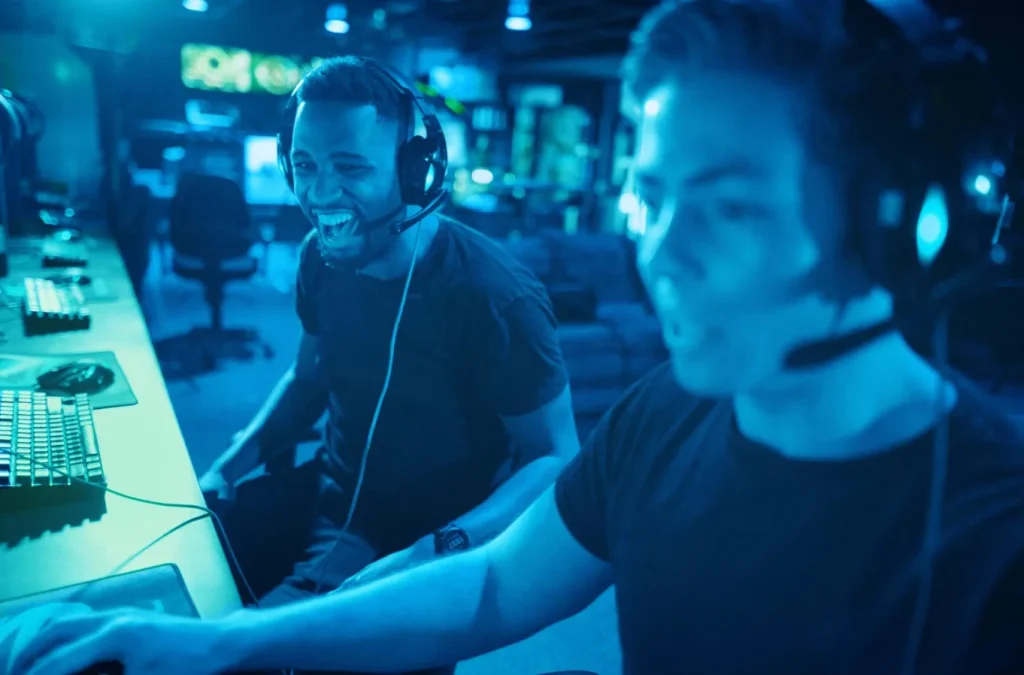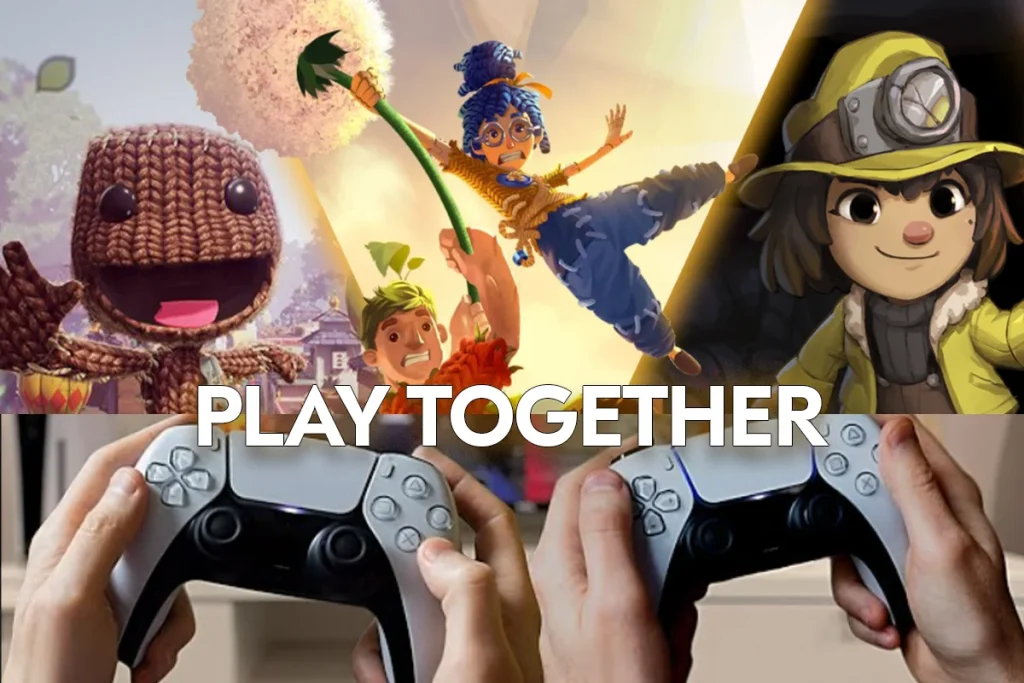It’s undeniable that online games can provide much-needed social interaction, especially when real-life connections feel scarce. At the same time, relying solely on video game interactions at the expense of real-world relationships can be a drawback. The challenge lies in finding the right balance between virtual and face-to-face communication.
In this article, I’ll explore where the golden middle ground exists between socializing in games and in real life, and what steps we can take to ensure both remain meaningful and fulfilling.
Between Two Worlds

The golden middle ground emerges when online interactions help us during difficult times – providing social support and entertainment – but, when life is going well, they should serve as a tool to strengthen real-life relationships. Ideally, gaming should complement in-person interactions, encouraging activities like bowling, billiards, chess, poker, or even go-karting and cycling.
Games today offer an incredible variety of experiences. Recently, I covered the Elden Ring Nightreign release date announcement for Today Gaming News, this game is designed for three-player co-op, making it a great example of how modern gaming fosters teamwork and camaraderie. Many such titles are being released, redefining social interaction in the context of video games.
I appreciate both forms of communication – online and offline. As a writer for EGW.News, I often come across studies discussing the impact of gaming on social interactions. One particularly notable study from Oxford suggests that video games can have positive effects on well-being, a point I frequently reference. However, the research also highlights that excessive gaming diminishes these benefits. To maintain the positive effects, it’s crucial to engage with high-quality and engaging content rather than simply consuming games in large quantities.
The Team Experience
A perfect example of blending gaming with real-world connection happened when my friends and I decided to play Civilization V. There were five of us, and instead of simply logging into an online match, we gathered at a friend’s house for an all-night gaming session. It was an amazing experience – not only did we enjoy the game, but we also strengthened our friendships in a way that only in-person gatherings can provide. The mix of gaming and face-to-face interaction created a unique bond, making the entire night unforgettable. It was truly a 2-in-1 experience – gaming entertainment combined with a real social connection.
One of my brother’s most memorable gaming nights wasn’t just about Fortnite – it was about being together. He and three of his friends decided to turn a regular squad session into something special by meeting up at his house instead of playing online from their own rooms. With controllers in hand and a big screen in front of them, they settled in for what would become an unforgettable night.
The difference was immediate. Every clutch play, every near-miss, and every surprise attack felt more intense when they could react to it in real-time, laughing, shouting, and strategizing face-to-face. The game itself was the same, but the energy was completely different. When they won a match, the excitement wasn’t just in the victory royale – it was in the way they all jumped up, high-fiving and celebrating together.
By the time the night ended, the game had become almost secondary to the fun they had just hanging out. The best moments weren’t just the epic wins but the side conversations, the inside jokes, and the simple joy of playing side by side. It was the kind of experience that made them appreciate gaming not just as a hobby, but as a way to bring people closer in the real world.
Mental Health

My lifestyle involves a lot of work and studying, often conducted online. To maintain my mental well-being, I make it a priority to visit the gym and go for walks to get fresh air. In this context, video games serve as a great way to stay socially connected despite a busy schedule. They help prevent isolation when I don’t have time for frequent meetups.
However, there is no full substitute for real-life interactions. Recently, an evening of billiards and darts with my friends refreshed my mind in a way gaming couldn’t. That night remains a standout memory – not just because of the activity but because of the genuine in-person connection we shared.
While gaming offers an escape and a sense of community, it’s the face-to-face moments that truly nourish the soul. Engaging in real-world activities, like those evenings with friends, fosters a deeper connection that no screen can replicate. It’s these moments of laughter, shared experiences, and spontaneous conversation that leave lasting impressions, reminding me of the importance of balance between virtual and physical worlds.
There have been times when video games truly became my refuge during periods of loneliness, offering a way to connect with others even when physical presence wasn’t possible. Whether teaming up with friends or diving into new worlds, games provided an escape and a sense of belonging. However, nothing beats the magic of split-screen games with a significant other. There’s something special about sharing the same screen, competing or collaborating side by side, that brings an unmatched sense of closeness. It’s a blend of fun, teamwork, and intimacy that no other medium quite captures.
The Evolution of Social Gaming
As technology advances, video games continue to redefine how we interact. In the past, online gaming was primarily about competition, but today, it offers shared experiences, deep narratives, and cooperative challenges. Games like Elden Ring Nightreign and many others push the boundaries of how people connect in virtual worlds. What once was a solitary hobby has evolved into an immersive social space.
Virtual reality, persistent online worlds, and live service games create environments where players can form friendships, collaborate, and even develop social skills. However, this new digital era shouldn’t replace face-to-face interactions – it should enhance them. The best way to utilize these advancements is to use gaming as a gateway to deeper real-world connections rather than a substitute for them.
Conclusion
Video games have undeniably changed how people connect, offering both advantages and risks. The key is balance – using gaming as a social tool without letting it replace real-life experiences. When online interactions serve as a bridge to strengthen real-world relationships, rather than replace them, they become truly valuable.
As gaming continues to evolve, it’s up to us to ensure it remains a positive force in our lives. Whether through a competitive esports match, a cooperative RPG, or a casual gathering of friends for a gaming night, video games should be a way to bring people closer—both online and offline.
In this ever-changing digital landscape, the way we approach gaming will shape its impact on our social lives. It’s important to recognize that gaming isn’t just a form of entertainment; it can be a powerful means of connection. With the right mindset, games can bridge distances, create new friendships, and even reinforce existing ones. The challenge is to maintain the balance where gaming enhances, rather than replaces, meaningful face-to-face interactions, ensuring that it remains a tool for positive social engagement rather than a barrier to real-world connections.





